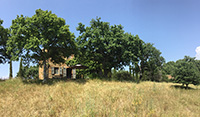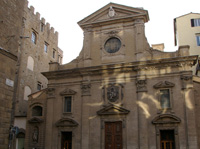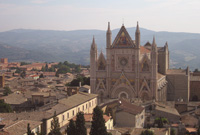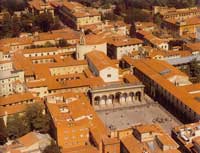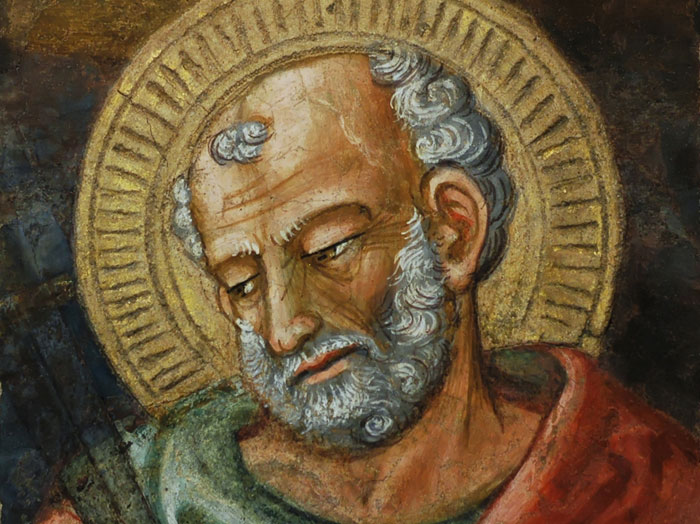 |
|
Bicci di Lorenzo, fresco of Saint Jude the Apostle, painted in Florence Cathedral |
|
Bicci di Lorenzo |
| Bicci di Lorenzo (1373–1452) was an Italian painter and sculptor, active in Florence.
|
[1] Bicci di Lorenzo was an Italian painter and architect. Son of the painter Lorenzo di Bicci, a traditional late follower of the artistic line of Orcagna, Bicci was similarly educated in art in his father's workshop, in which he began to share in the production of artistic products between the end of the 14th and the beginning of the 15th century (Tabernacolo del Madonnone, previously in Via Aretina, Florence; frescoes and sinopias now taken down and in the depositories of the Galleries in Florence). Having inherited the rich and flourishing workshop from his father in 1405, he continued the workshop. His widespread activity lasted for all the first half of the 15th century. This is witnessed by works for the Medicis (cycle of Illustrious Men frescoes in Palazzo Vecchio of Via Larga, documented by Vasari), for Niccolo da Uzzano (frescoes and panel in Santa Lucia de'Magnoli, documented but lost; triptych for the Villa in Greve, today in the Greve parish church), for the works on the Cathedral in Florence (cycle of frescoes of the Apostles produced for the consecration of the Cathedral in 1434), for the Hospital of Santa Maria Nuova (fresco representing the Consecration of St. Egidio, originally on the facade of the church, now in the administrative offices of the Hospital), the chapel of San Giovanni Gualberto for the Compagni family in Santa Trinità (the frescoes still remain in the entrance arch, in the same church and the Triptych, at one time on the altar, now in Westminster Abbey, in London). Though not attracted to the artistic ideals and innovations of the Renaissance, he developed the productive capacities of the workshop by inaugurating a remarkable series of partnerships and collaborations with other painters. Bicci di Lorenzo died in 1452, but already for some years the running of the workshop had passed to his son Bicci di Neri, who continued its fortunes for the whole of the second half of the century, by traditional methods. [2] Cecilia Frosinini, Neri di Bicci, Adoration of the Christ Child with Saint Lawrence, in Old Mastters, p.481 | www.academia.edu |
||||
Art in Tuscany | Art in Tuscany | Giorgio Vasari | Lives of the Most Excellent Painters, Sculptors, and Architects |
||||
|
This article incorporates material from the Wikipedia article Bicci di Lorenzo published under the GNU Free Documentation License. |
||||
|
||||
Podere Santa Pia |
Podere Santa Pia, giardino |
Podere Santa Pia |
||
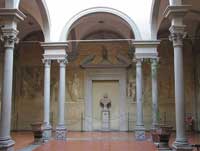 |
||||
Santa Trinita Florence |
Piazza della Santissima Annunziata in Florence |
Choistro dello Scalzo, Florence |
||
Orvieto, Duomo |
Piazza della Santissima Annunziata in Florence |
Florence, Duomo |
||



